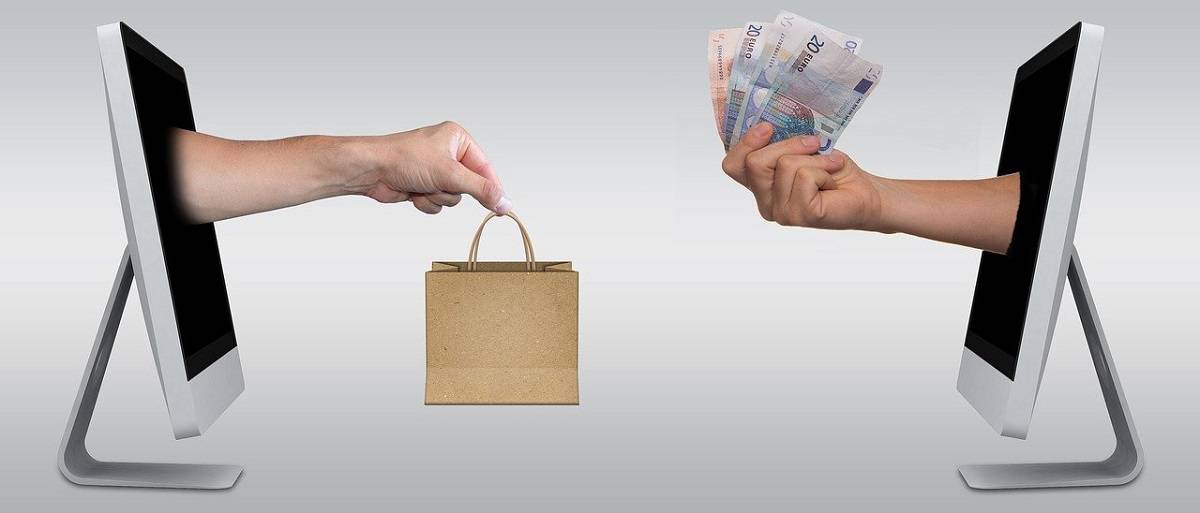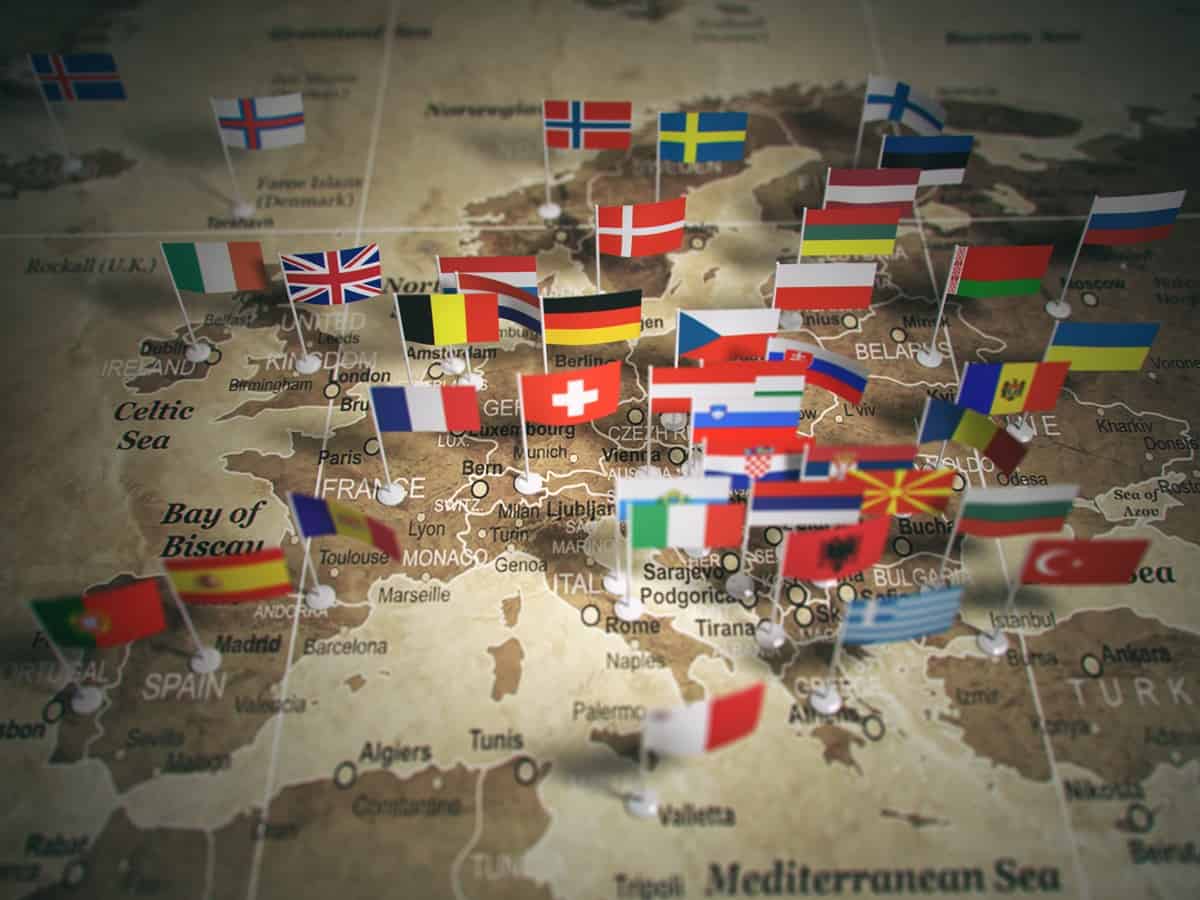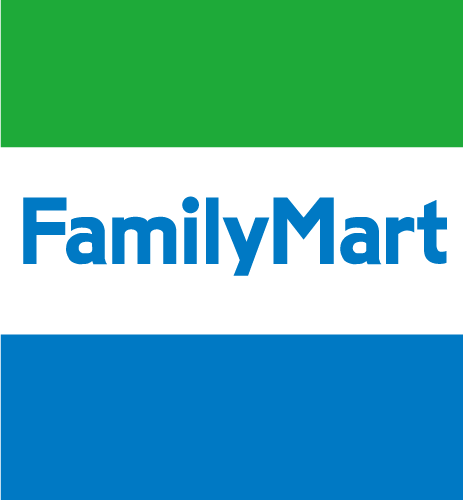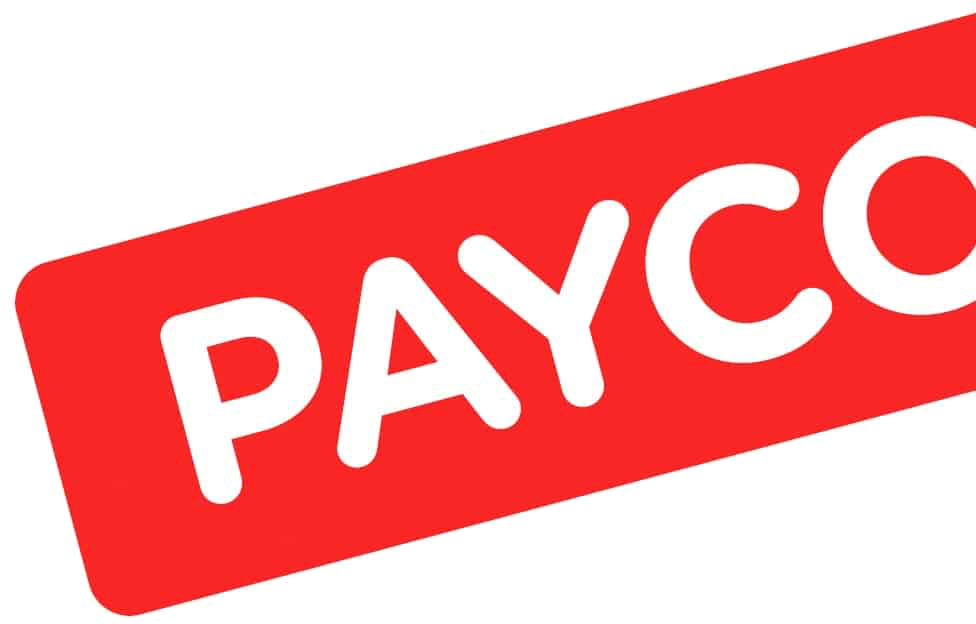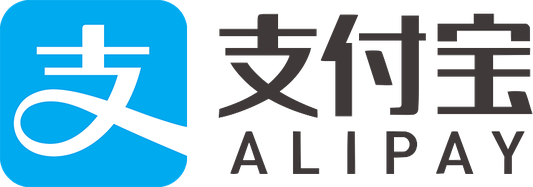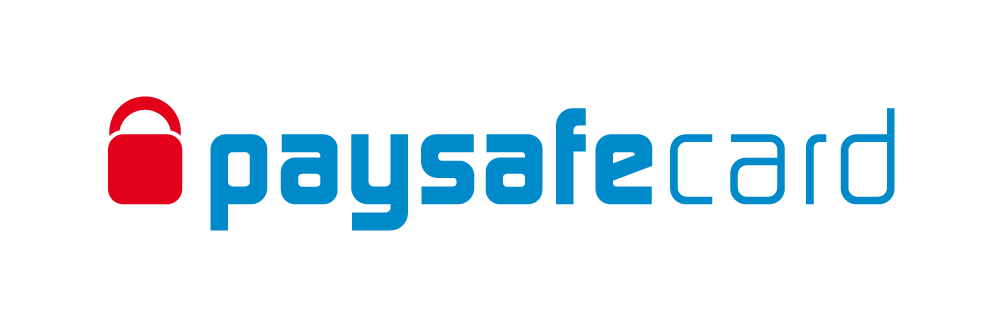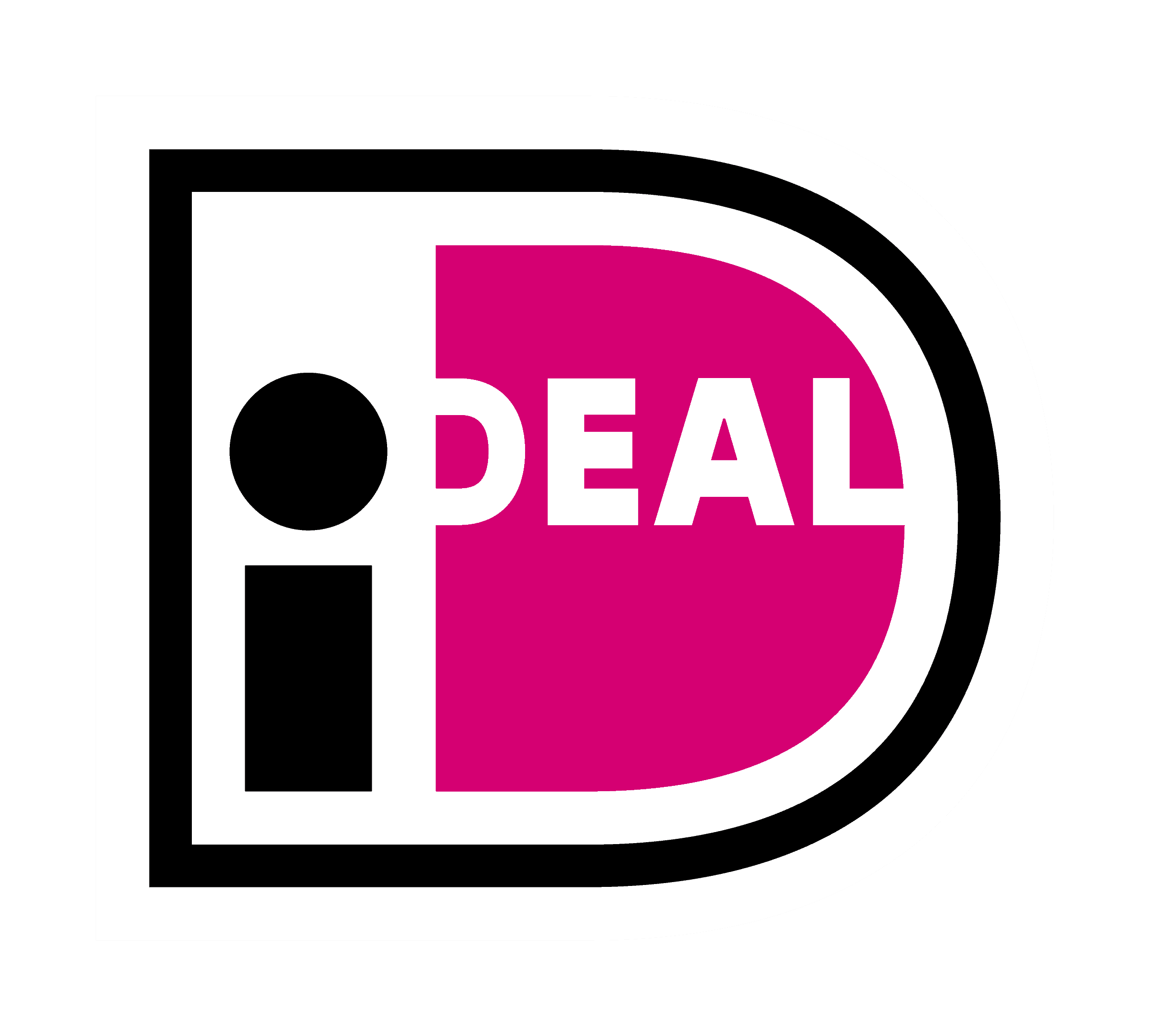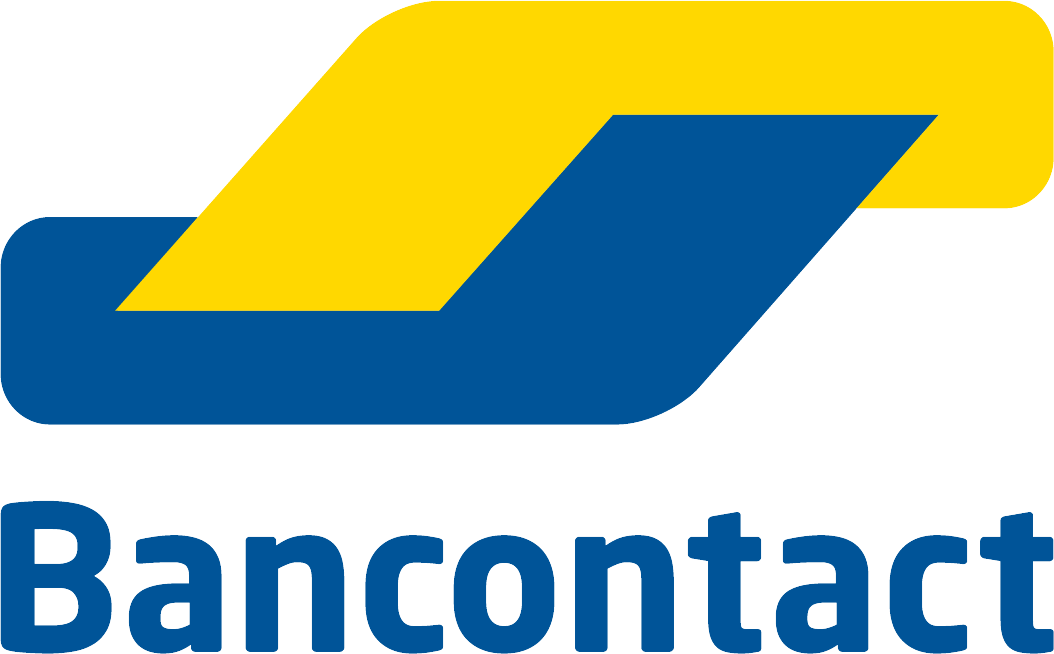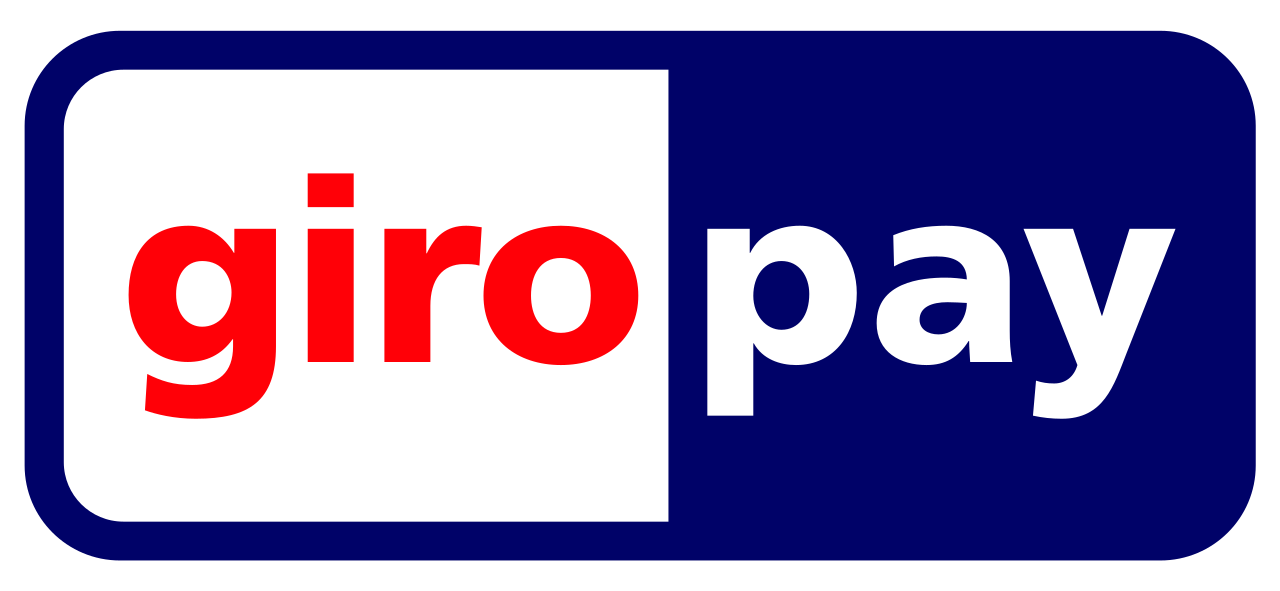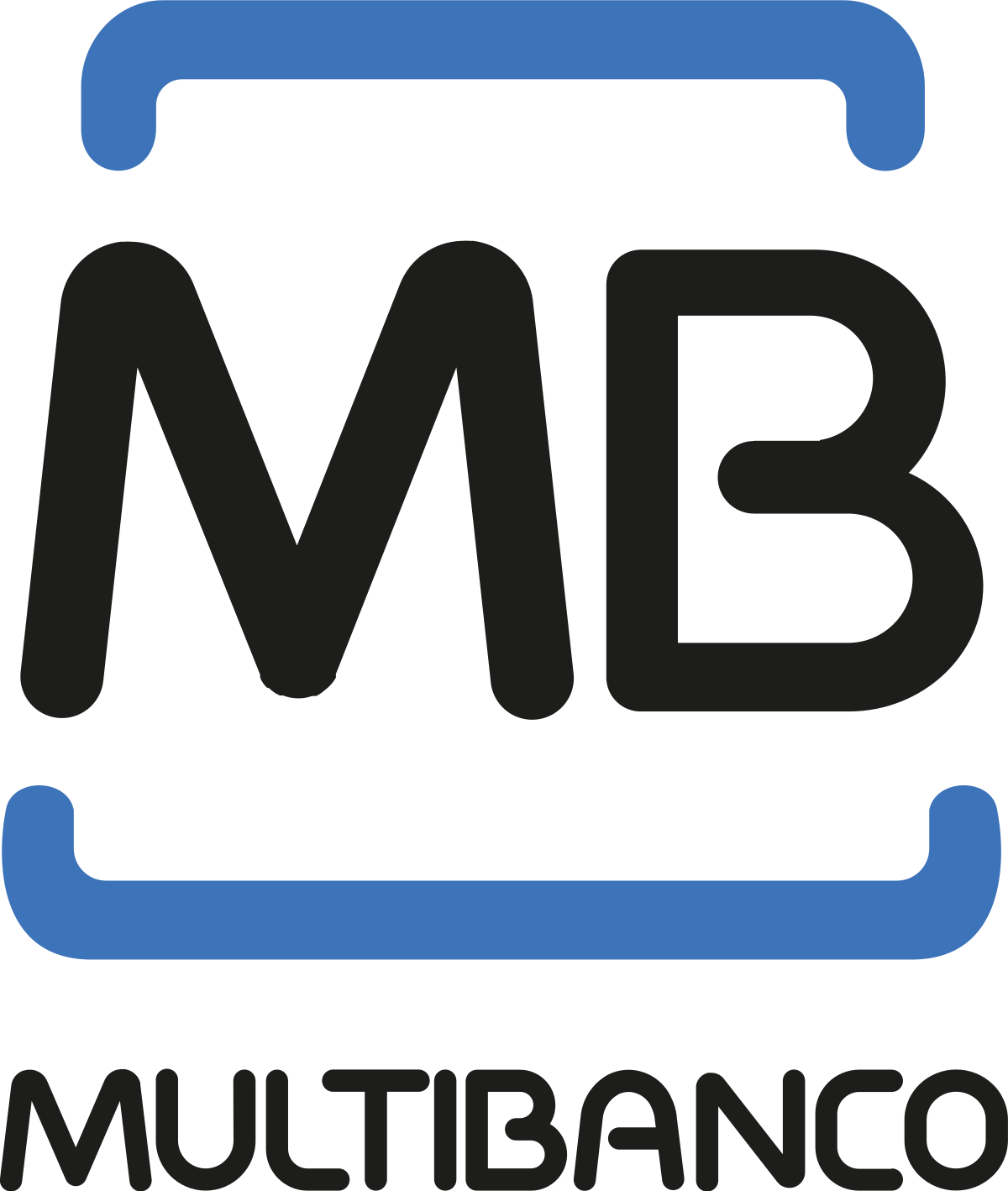
We help businesses accept payments online.
If you’re looking to expand your customer base without the complications of opening a physical shop in another country, Cross-border eCommerce is the logical solution.
China and Japan might already be on your radar, but South Korea is another mature market you shouldn’t overlook.
With its steady growth rate, high internet penetration, and superior shipping and delivery infrastructure, South Korean eCommerce could be a perfect fit for your business.
In this article, we will cover the current state of the market and future projections to help you understand whether expanding to Korea online is right for your business. We will also include tips how to succeed in this market.
Korea eCommerce Market Overview

Market Size
Specialists expect the South Korean online market to reach $160.4 billion by 2027. One of the main reasons behind its profitability and steady growth is its convenience.
The country has inexpensive nationwide shipping including last-mile support up to delivery to the recipient. This means you can reach all consumers across Korea quickly and easily.
Here are some other key factors that make the Korea online market an attractive avenue:
- High broadband internet penetration rate of 83% by 2025
- Highest smartphone penetration in the world
- Increasing consumer trust in online shopping – 90% of Koreans have shopped online
- Developed and secure online payment systems
Growth Rate
In the seven years up until 2021, the South Korea eCommerce market has grown by 312%.
In 2023, the growth rate reached 10.6%, putting South Korea in the top ten countries with the highest eCommerce growth rate in the world.
Continuing on its trajectory, this mature market is expected to keep growing by a steady 7.7% per year between 2023 and 2027.
Demographics
South Korea has 51,7 million people, and the nation is quickly growing older with 44 years old being the current median average.
However, before we get into your typical Korean consumer profile, we need to mention some significant factors that shape Koreans’ daily environment and behaviors.
Firstly, this is the most digitally connected nation in the world, ahead of even Japan and Singapore.
South Korea was the first country in the world to roll out a 5G network in April 2019, in time for the Pyeongchang Winter Olympics where visitors had their first 5G experiences.
As a result, most Korean households and public spaces have high-speed internet. This is great news for cross-border eCommerce because it means you can reach almost everyone in Korea by selling online.
Speaking of Korean records, the vast majority of the nation (95%) owns a smartphone. The rest own phones that can’t connect to the internet. This makes South Korea the first and only country in the world with 100% of its population owning a phone in 2019.
South Korea is also one of the hardest working nations in the world with an average workweek of 52 hours. In fact, the president’s administration suggested a further limit increase to allow a total of 69 working hours per week in 2023.
This environment leaves many South Koreans with plenty of time to be online, yet scarce time for other activities outside of work.
eCommerce is a staple in their lives because it can help them with both:
- Cut down the time spent on chores like groceries or looking for the right product (especially thanks to online personalized recommendations and livestream shopping)
- Provide a productive or at least entertaining way to pass the time on the way to and from work, potentially freeing up some time for other activities (if they shop on the commute instead of using their free time for it, for example)
In recent years with livestream sales and booming social commerce, eCommerce is weaved into Koreans’ day-to-day further, blended with their entertainment, making shopping less of a chore than ever.
Here are some interesting facts about South Korean consumers:
- They have at least one smartphone, and often a second phone for entertainment and gaming
- Make purchases on their smartphone
- Commute between 15-59 minutes, up to two hours each day
- Work long hours and need to make chores and other activities as efficient as possible
- Spend the majority of their time online
- Frequently shop due to boredom
- Like to window shop in person but complete purchases online due to practicality and special deals
- Prefer shopping online even for daily groceries to save precious time, especially since the pandemic
- More community-oriented than individualistic
- Use KakaoTalk, a platform meant for chatting with friends and discussing products
- Often buy gifts for friends and relatives, and not only on special occasions
eCommerce Regulations
Getting to know the local rules helps you keep your business and customers safe and prevents compliance issues.
Below are some relevant regulations and authorities for South Korean cross-border eCommerce
- The Act on Consumer Protection in Electronic Commerce (eCommerce Act) requires vendors to comply with various requirements to protect consumer rights
- The Electronic Transactions Act governs online transactions
- The Personal Information Protection Act regulates the collection and handling of personal data
- International Trade Administration has a guide on import requirements and regulations for South Korea
- The Monopoly Regulation and Fair Trade Law protects the rights of sellers and platforms to ensure dominant platforms don’t abuse their power
- The Fair Labelling and Advertising Act determines advertising requirements and prohibits deceptive, false, and slanderous marketing
- Korean Pharmaceutical Affairs Law prohibits the provision of information about prescription drugs and regulates drug advertisement
Although English is increasingly used in South Korean marketing, foreign advertisements must contain the Korean language and comply with local censorship rules.
For example, it’s forbidden to show smoking on TV, and advertisements containing alcohol can only be aired during a limited time window.
Before you start selling, it’s worth researching specific limitations that pertain to the types of goods you’re selling to get the best returns on your investment in South Korea.
Popular Product Categories

These are the most popular eCommerce categories in South Korea as of June 2023 according to Statista:
- Clothing
- Food and beverages
- Shoes
- Cosmetics and personal care
- Books, movies, and games
- Bags and accessories
- Health products
- Sports and outdoor
- Stationery and hobby supplies
- Electrical and electronic products
- Household products and furniture
When it comes to cross-border eCommerce, 41% of all goods sold to Koreans internationally comes from the US. The most popular cross-border products include:
- Health supplements
- Apparel
- Electronics
- Footwear
- Bags
Top eCommerce Websites in South Korea
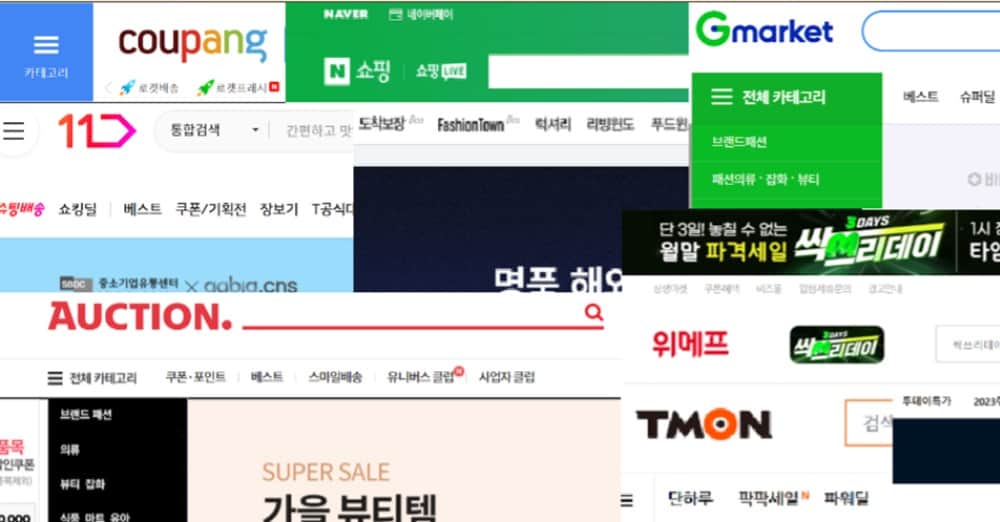
The most popular South Korean eCommerce belong to Naver, Coupang, and Shinsegae (the parent company of Auction, Gmarket, and SSG).
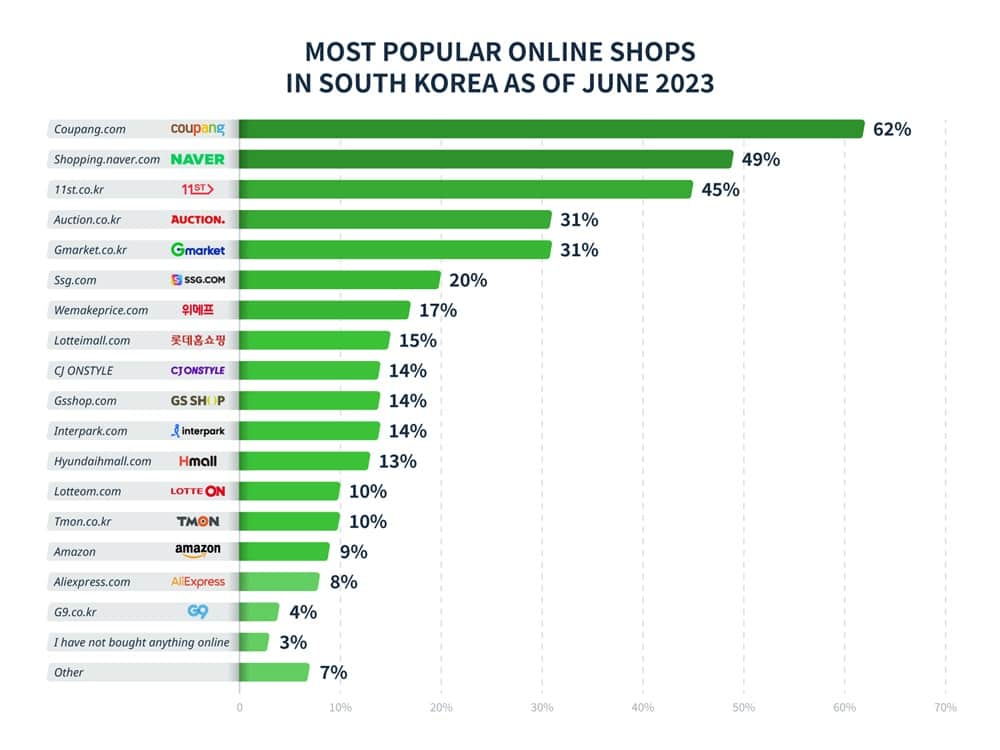
We’ll cover most of the mentioned platforms below.
Coupang.com
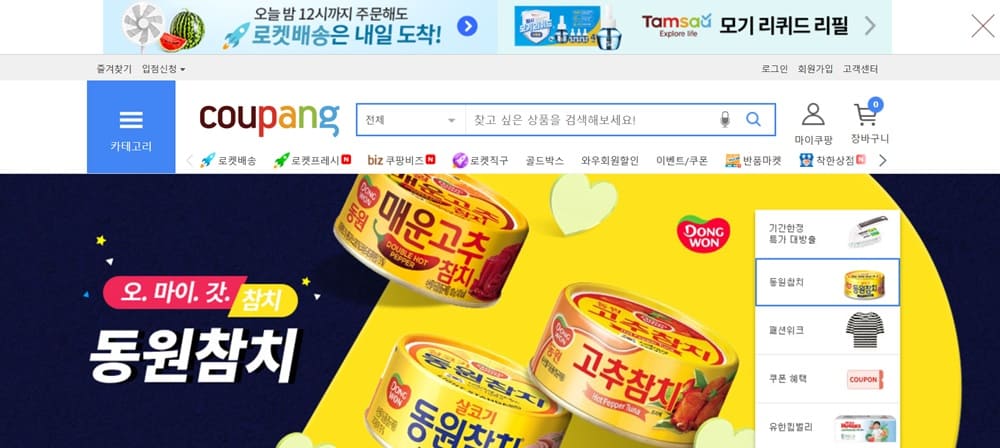
Coupang was founded by Bom Suk Kim in 2010 in Seoul, South Korea. It was modeled after Amazon, and is commonly referenced as the “Amazon of South Korea.”
Today, Coupang is the largest online marketplace in the country selling products across all categories, such as apparel, appliances, food, personal care, and furniture.
The largest visitor group are 25-34 year olds (24.05%), and over 60% of Coupang’s visitors are 44 or younger, mostly male (65.91%).
What sets this company apart is its dedication to customer service. It has an exceptional end-to-end logistics system that solves common customer pains such as long delivery times and expensive returns.
Coupang is known for its signature Rocket Delivery service which guarantees fast deliveries, usually within a single day. It’s free for subscribed members or orders over 20,000 Korean Won.
The company also provides addtional convenient services:
- Rocket Wow – paid subscription service with perks, similar to Amazon Prime
- Rocket Fresh – fresh food delivery that arrives by 7 AM the next morning if they order before midnight the day before
- Rocket Direct Purchasing – a service that delivers goods purchased from abroad within 3 days
- Coupang Eats – similar to Uber Eats, which allows customers to order food from restaurants and track their order in real-time
- Coupang Flex – an outsourcing service offering temporary employment to anyone over 18 years old, mainly in delivery
- Coupang Play – subscription-based video streaming service
In 2019, Coupang announced a global partner program to give foreign brands instant access to the South Korean eCommerce market, including local advertising and access to their established audience of repeat customers.
Following the success with cross-border eCommerce and market demand for U.S. products on the platform, Coupang has established warehouses in the U.S.
Companies can store their goods in Coupang’s California warehouse, and Coupang ships each product directly to the customer in Korea with a three-day delivery period.
Many international brands such as Lego, Earth Mama, Jarrow, Gap, and California Baby found their ground in South Korea by selling on this platform.
Naver Shopping
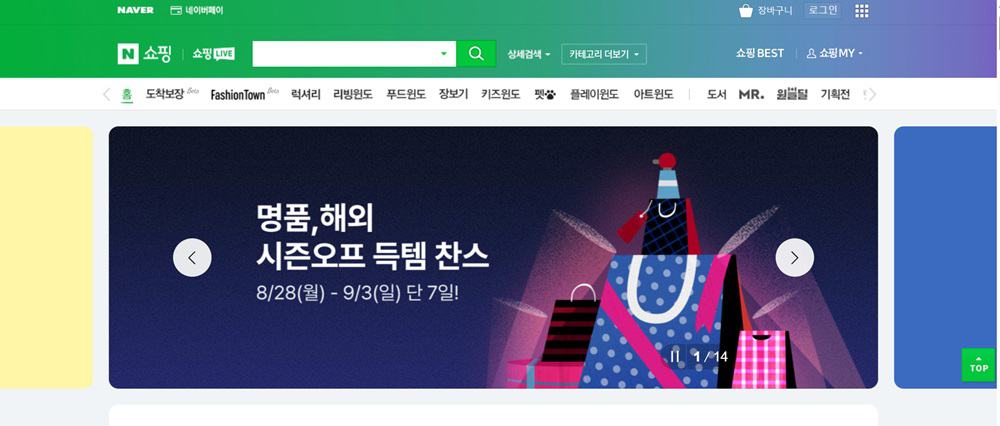
Naver is an internet conglomerate founded in 1999 as Samsung’s in-house venture project.
It’s known for constant innovations and many affiliates and subsidiaries that offer a wide range of services specifically tailored to the South Korean market, most notably the Naver search engine.
A survey from 2021 revealed that 93% of South Koreans use Naver rather than Google when searching for information online.
Naver Shopping is the company’s dedicated eCommerce platform. It offers products across any major product category you can think of, following a B2C but also C2C selling model with low entry barrier.
Naver Shopping is currently the second most popular eCommerce website in South Korea, and below are the main reasons why:
- Naver is leading the live streaming sales space with their “Naver Shopping Live” platform where customers watch videos, interact with vendors, and make purchases in real-time
- Naver’s search engine promotes the company’s subsidiary platforms above others. This leads to higher traffic and visibility for brands featured on any of Naver’s platforms compared to those on Coupang or G-market.
- “Naver Cafe” is a community platform that focuses on exclusive content to foster hubs of subscribed and engaged top fans, which is also useful for targeted brand advertising
- Lastly, Naver also owns Zepeto, a metaverse platform that’s gaining a massive fanbase from younger generations
Zepeto has partnerships with over 120 global brands. In 2023, this platform is collaborating with the fashion brand Ami Paris to launch an exclusive Ami Paris World metaverse collection.
The network of platforms and services tied to this company and its localization make Naver a great partner for foreign brands.
11Street (11st.co.kr)

Owned by SK Telecom, 11Street is a nationally-focused platform that sells appliances, fashion, beauty, furniture, automotive, groceries, toys, personal care, electronics, books, hobby, and pet care items.
The products range from the company’s inventory to third-party vendors’ items.
In 2021, 11St partnered with Amazon. Amazon previously didn’t have a website dedicated specifically to South Korea and their shipping to Korea was long and inconvenient, so shopping on the platform was impractical.
The partnership with 11St allowed Amazon to offer millions of internationally available items to Koreans with free or low-cost and fast shipping.
Consumers can shop all Amazon Global Store products directly from the 11St website.
Auction.co.kr
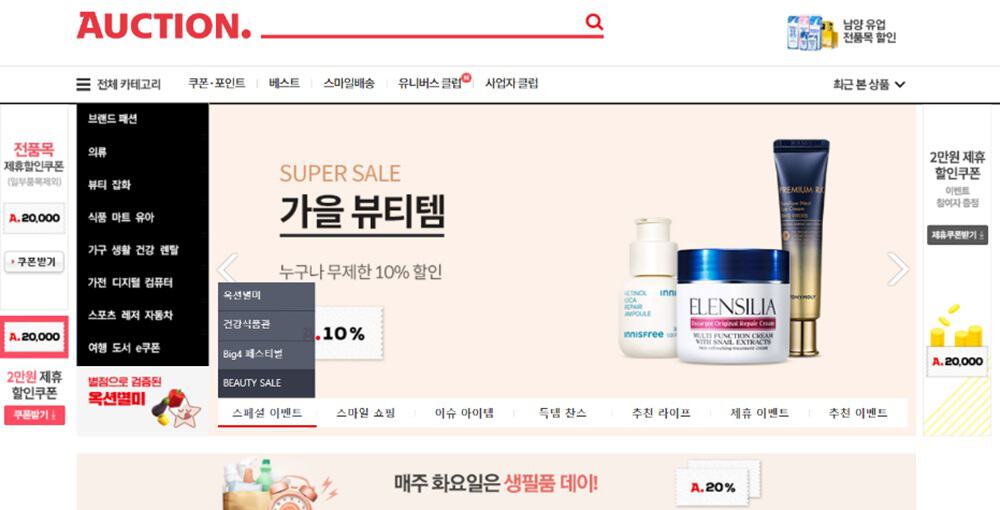
Auction was the first auction online platform in the history of South Korea, and one of the country’s oldest eCommerce platforms, founded in 1998.
Auction and Gmarket were both acquired by eBay Korea in 2009 and subsequently sold to Shinsegae, propelling Shinsegae to become one of the top three market share holders in the country.
While not as competitive as some other platforms on this list, Auction is still popular with consumers because it allows them to compare product prices and find the best offers by providing data from over 3000 other sites.
The site also features user-generated content including reviews and expert takes, which helps consumers make informed decisions.
Gmarket
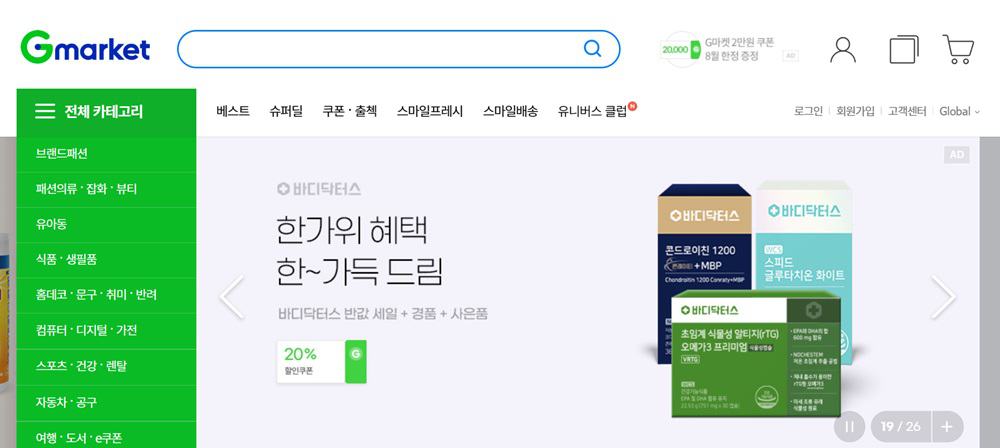
Gmarket was founded in 2000 as a subsidiary of Interpark. It’s a popular C2C and B2C platform that also sells internationally. It supports Korean, Chinese, and English languages.
The platform offers sale programs such as Smile Points and Gstamp, and offers monthly discount coupons. It also has a strong affiliate program which allows affiliates to post live Gmarket Shopping links and images directly on their websites.
Gmarket accepts a bigger variety of payment methods including South Korean and international credit cards, PayPal, wire transfer, or “Smile Cash,” the balance on a consumer’s personal Gmarket account.
Other than the shopping mall credit, Gmarket doesn’t deal with products or interfere with transactions. It encourages post-purchase seller reviews so future customers can gauge if a vendor is legitimate and trustworthy to regulate the market and reward good practices.
The platform makes money by taking small fees from sellers and through advertising.
WeMakePrice
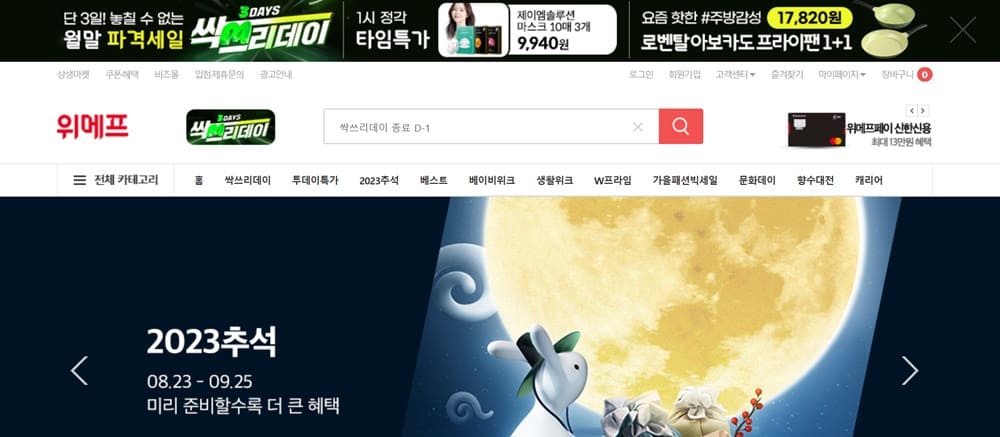
WeMakePrice is a social commerce platform founded in 2010. As of April 2023, it’s owned by China eCommerce platform Qoo10 along with Tmon, another South Korean eCommerce website we’ll discuss in a bit.
The most notable element of WeMakePrice is the group discount model that encourages people to shop together and get the best deals, leading to an engaged audience and lots of traffic.
The products sold on this platform range from fashion and beauty to groceries and daily necessities.
However, WeMakePrice is currently not at the top of the Korean eCommerce popularity list.
To remedy that, the company’s chief executive Ha Song announced plans to create an AI-based feature capable of analyzing data from millions of products and online shops. This service would compare product prices, styles, and reviews and curate this information to the consumer all in one place.
The idea is to make this “Search AI” the best in the industry which would give the company a competitive edge.
In the meantime, WeMakePrice also offers software development, manufacturing, and distribution services.
Tmon
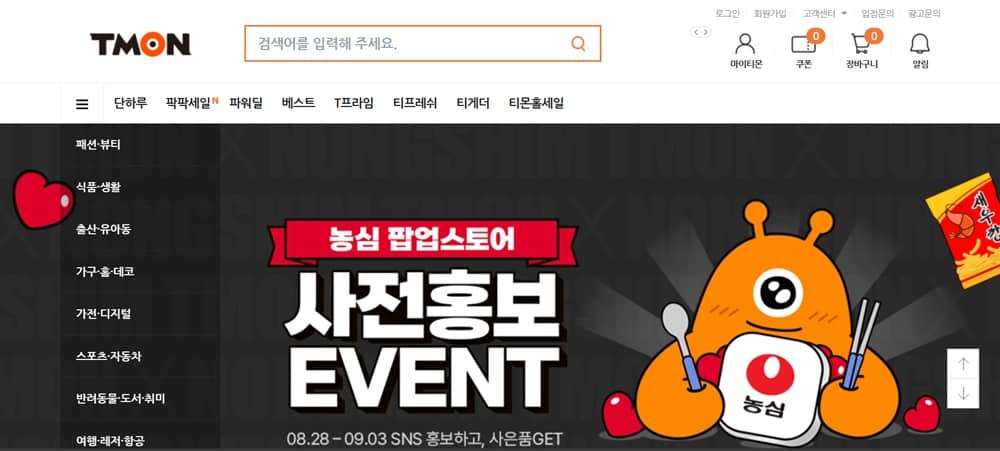
Ticket Monster or Tmon is a mall-type eCommerce site launched in 2011. Despite being a relative latecomer on the scene, it rapidly grew and earned its spot in the South Korean eCommerce market. Today it’s a subsidiary of Chinese Qoo10.
This platform is dedicated to attracting a young audience and has a distinguishable, youthful brand voice. The workers employed at Tmon are nicknamed “Timonions,” and the company created five recognizable monster characters or Timoni, called Energety, Trusty, Witty, Smarty, and Sweetie.
Tmon is based on two selling models:
- Social commerce, popular with the younger generations
- Deal commerce, with discounts of up to 95% every day and random minigames with prizes
The products sold on this platform include food, fashion, perfumes, appliances, kitchen accessories, and gifts. People also use Tmon for its food delivery service and activity reservations.
In 2023, the company announced the launch of “Qx Prime” which guarantees next-day delivery if the customer orders before 2 PM.
Case Studies of Companies Expanding to South Korea eCommerce
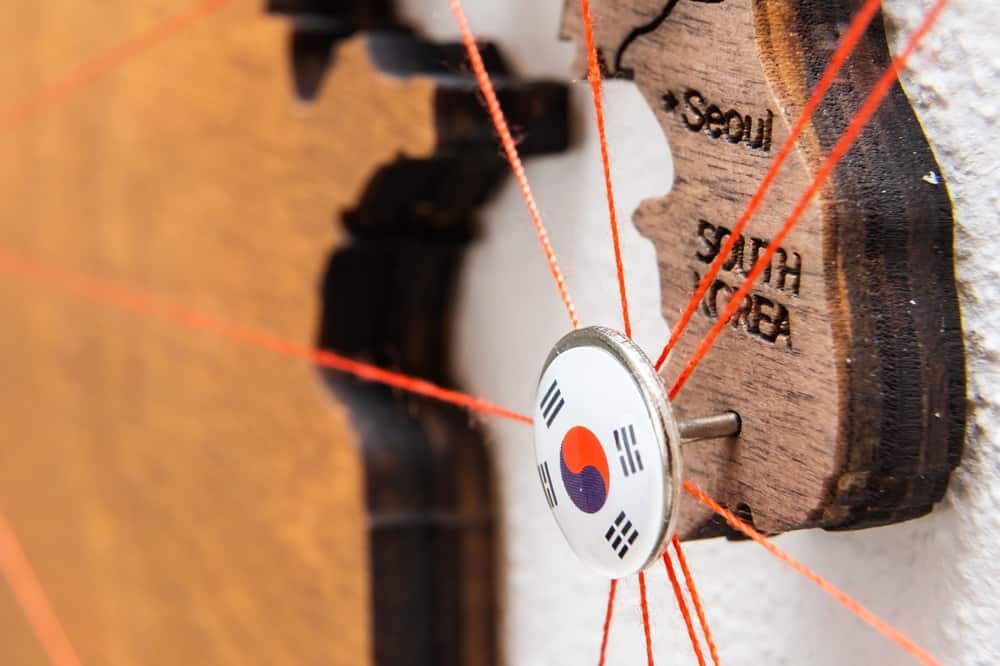
1 ASOS
ASOS is an international eCommerce company selling casual fashion products, usually targeted towards the young female population that’s active online.
Since American apparel was already in demand in Seoul, ASOS products would make a good market fit.
The brand already had worldwide recognition as a head start. Succeeding in the Korean market was only a matter of localizing their online presence for easy access and getting the word out.
Here’s how they did it:
- Created a Korean version of their website, making it discoverable through Naver
- Employed dedicated support staff that speaks Korean
- Implemented a marketing strategy focused on Korean media
ASOS reached out to Pikicast, a trendy Korean news site, and offered a 20% discount code for their audience.
The offer was appealing because the company sold plenty of items from foreign brands, many of them unavailable in Korea at the time.
The news spread on Naver’s blog, social media posts, and all over the internet which boosted ASOS’ brand awareness and consumer engagement in Korea.
Piaget
Piaget, a Swiss luxury watchmaker, and many other brands known for selling strictly offline are changing their philosophies and partnering with South Korean eCommerce platforms to set up an accessible online presence.
The point is to keep up with the times and catch the attention of a future, younger audience using a medium they’re comfortable with.
Partnering with an eCommerce platform is a great way to skip ahead and get instant access to the market, especially for famous brands.
Piaget went a step further and launched its new Polo Chronography watch at SSG.com for the first time anywhere in the world.
Although SSG.com has previously sold two luxury watch models with permission from Piaget, this is the first time the company has created an offer specifically for this online platform and the South Korean market.
Tips to Succeed in Selling in South Korea

1. Be mobile-friendly
If you’re selling to a hyper-connected nation such as South Korea where everyone has at least one phone and uses it to shop online, it only makes sense to optimize your interface to be mobile-friendly.
Make sure the screen renders properly and your website design is intuitive even on a vertical screen.
It takes some reorganization and prioritization of elements such as images and links, but it’s worth it – otherwise, lots of your traffic could go to waste.
2. Apply targeted marketing strategies
First, the obvious: have a Korean version of the website.
But don’t merely translate your website and campaigns to Korean. Before doing any marketing, do due research and figure out what local problems you can solve, and what demand is already there that you can meet.
For example, the Korean “ten-step skincare routine” is known for being a time-consuming and important ritual using products that differ from typical Western skincare.
It’s focused on cleansing, nourishing the skin, and adding essential nutrients, compared to American skincare which uses more aggressive ingredients and focuses on exfoliation.
A skincare or beauty brand could cater to this local preference by offering more Korean-friendly products with gentle ingredients, potentially suited for certain steps in the popular routine and marketed for this purpose.
Adopt this mindset when searching for the right opportunity in your lane. Here are some unique customs to know about selling to Korean consumers:
- Gifts are not reserved for special occasions. Rather, they are common everyday occurrences meant to show friendship, appreciation, or affection
- Spam is a standard gift with historical significance, especially for Chuseok, the Korean Thanksgiving
- Four is an unlucky number because the word in Korean is similar to their word for “death.” This goes so far that apartments with multiple fours are more likely to have lower property value, and elevators mark floors in order: “1, 2, 3, F”
- Similarly to horoscopes in other countries, everyone in Korea knows their blood type. Each type is associated with certain personality traits, and people even ask about each others’ blood types to determine compatibility
- Laundry detergent and toilet paper are common housewarming gifts
- There is no stigma around men wearing makeup; all genders wear it, and it’s so popular in Korea that Seoul has entire districts dedicated to cosmetics stores
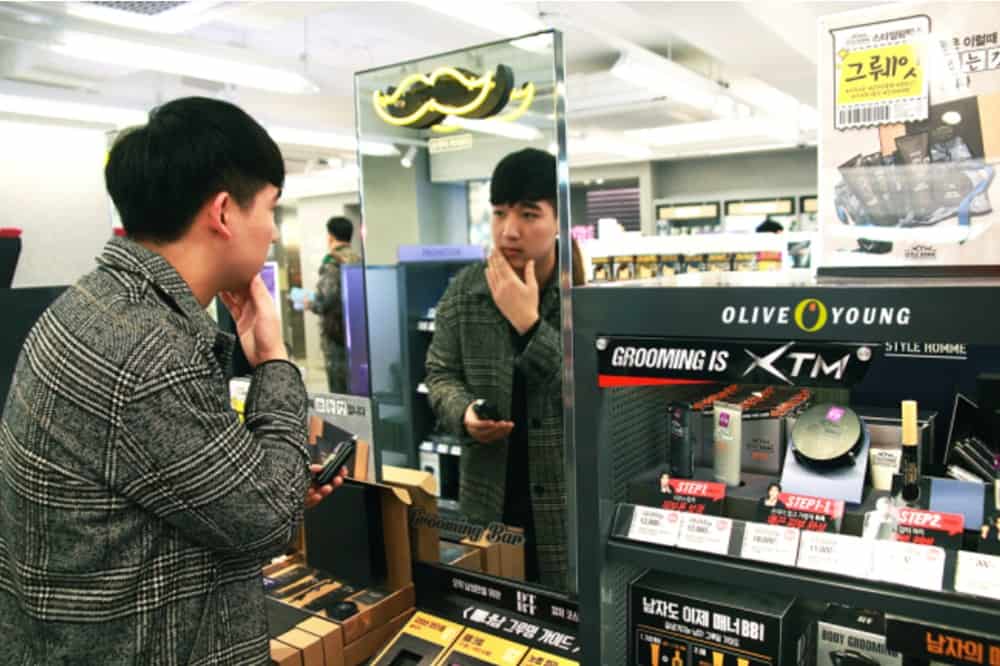
- Since Koreans work so hard, sleep deprivation is the reality regardless of industry. Samsung’s smartwatch data reveals that, after the increased sleeping time during the pandemic, Koreans sleep only 6 hours and 41 minutes per day.
- There’s a superstition that fans can be lethal if left on during the night, so automatic shut-off timers are considered an indispensable feature on fans in South Korea
- Koreans traditionally consider newborns to be one year old at birth, and only as of recently calculate their age from 0, the “international” way
- It’s normal for Koreans to live in their childhood homes until they get married. As a result, they have love hotels with one-hour, four hours, or overnight stay options that give couples some privacy
3. Learn about local holidays and customs
Holidays are a fantastic opportunity to learn about your audience, be in tune with their established behavior trends, and cater to their needs when it comes to celebrations and gift-giving.
Since many holidays differ from those celebrated in other parts of the world, this gives you a prolonged window for peak sales periods.
Here are some South Korean holidays and ways they are celebrated:
Holiday | Celebration |
Lunar New Year (Seollal) | ● First day of the lunar year and biggest Korean holiday, celebrated in the first two months of the calendar year ● Koreans typically celebrate with family and eat traditional meals such as rice cake soup |
Greater Full Moon (Jeongwol Daeboreum) | ● Falls on lunar January 15th ● Celebrated with a special dish called ogokbap, which is made with five grains and served with vegetables |
Thanksgiving (Chuseok) | ● Occurs on lunar August 15th ● Families gather to pay respect to ancestors and eat special rice cakes called songpyeon |
Christmas | ● Falls on December 25th ● Koreans usually celebrate with their significant other, not family ● Celebrated regardless of religion |
Additionally, Korea is known for celebrating 12 romantic holidays per year, always on the 14th day of each month.
This includes Valentine’s Day with a special spin: the 14th of February is a day to celebrate men, who typically receive chocolates from women on this day. Women get their turn next month, on the 14th of March, known as White Day.
In addition to Black Day on the 14th of April, Koreans who are single in Korea also have Pepero’s Day on the 11th of November so they aren’t excluded from the celebrations.
Holidays aside, there are three noteworthy customs in Korea:
- The 100th day is a milestone. Koreans celebrate the 100th day since the birth of a child with special banquets, and couples celebrate the 100th day of their relationship
- Traditionally, Korean weddings are extravagant. The average wedding costs 47.2 million Won ($35,709)
- Elders traditionally celebrate their 61st birthday with all their descendants. As of recently, the focus is more on the 70th birthday due to Korean lifespans reaching 80 years
You can use this information to tailor your offers and marketing to the Korean audience and integrate with their culture.
4. Make strategic partnerships
From eCommerce platforms, to logistics partners, to marketing and other consultants, local partners are worth your consideration:
- They can make your expansion so much easier and smoother
- Help you spot local opportunities to capitalize on
- Lower your chances of making expensive mistakes
- Take part of the work off of your plate
- Show you what it takes to gain trust and recognition in Korea
For instance, if you sell over an established platform, you get instant access to their customer base, advertising, and logistics at the price of their fees and having to comply with their requirements.
If you don’t need the whole package, maybe you do need help with specific aspects like shipping or integrating Korean payment methods.
Making the right call and starting on the right foot is easier with an experienced partner by your side.
5. Supporting Local Payment Methods
When it comes to the logistics of checking out, each market has unique requirements. Clearing all previous steps only to fail this final localization test leads to those dreaded abandoned shopping carts.
To succeed in South Korea, you need to support these payment methods:
- Credit cards – international and local
- Digital wallets – KakaoPay, Toss, and PAYCO are popular options
- Carrier billing – allowing customers to checkout items immediately but adding the price to their monthly phone bill
- Prepaid wallets – Culture Voucher and Happy Money are popular prepaid options in South Korea
South Korea has local and international credit cards, and this payment method makes up 70% of the transactions in the country.
KOMOJU can help you integrate all of these payment methods, which grants your South Korean audience full access to your online store.
Expand Your Customer Base With South Korean eCommerce

The South Korean eCommerce market is a fantastic opportunity for selling cross-border – the entire nation is already online on their phones, and regularly shopping online.
The spoils go to businesses that know how to cater to this audience.
To summarize, these are the steps you shouldn’t skip to make your Korean expansion successful:
- Be mobile-friendly
- Apply targeted marketing
- Learn about local holidays
- Make strategic partnerships
- Support local payment methods
Feel free to contact us for help unlocking this market. KOMOJU can take the payment localization part completely off your hands so your Korean customers don’t run into a wall at the checkout.
You can learn more about South Korean local payment methods here.

We help businesses accept payments online.



